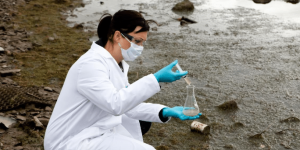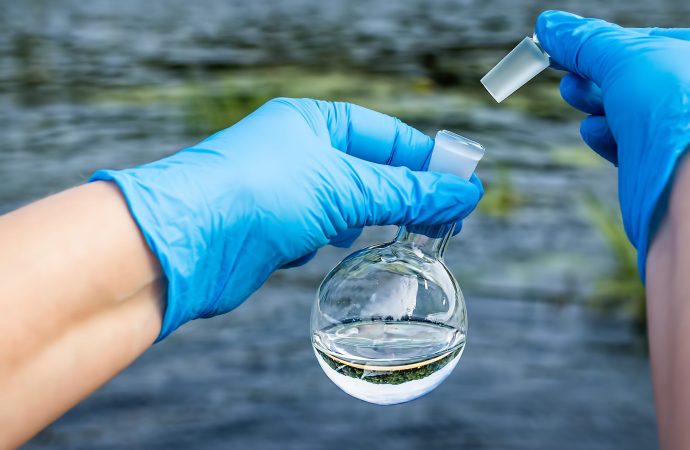Introduction Water is undoubtedly one of the most precious resources on our planet. It sustains life, fuels economies, and nourishes communities. However, when a chemical spill contaminates our water supply, it can have severe impacts on human health and the environment. The recent chemical spills that occurred in various parts of the world were a
Introduction
Water is undoubtedly one of the most precious resources on our planet. It sustains life, fuels economies, and nourishes communities. However, when a chemical spill contaminates our water supply, it can have severe impacts on human health and the environment. The recent chemical spills that occurred in various parts of the world were a wake-up call for all of us to understand just how important vigilant water monitoring is! In this blog post, we will discuss why we need to be more aware of water quality and what steps can be taken to ensure safe drinking water for everyone.
What is a chemical spill?
Chemical spills can release a variety of dangerous chemicals into the environment, posing a serious threat to both people and wildlife. When a chemical spill occurs, it’s important that first responders quickly identify the type of chemical involved and take appropriate measures to clean up the spill site.
In order to minimize potential health risks, responders should also keep an eye on nearby water sources in the area. If there’s been a chemical spill, immediately check your water for contamination and take appropriate steps to protect yourself and your family.
The Hidden Dangers of Chemical Spills
Chemical spills can happen for many reasons, such as industrial accidents, transportation incidents, or equipment failures. When chemicals leak into the environment, they can travel quickly through waterways. Even small amounts of certain substances can cause serious harm. Some chemicals are toxic to humans, while others may damage plants, animals, and aquatic life. The danger is often increased because contaminants can mix with water sources used for drinking, irrigation, and recreation.
Why Water Monitoring is Essential
Water monitoring after a chemical spill is about more than just testing for immediate safety. It is a continuous process that ensures contamination levels are tracked over time. This helps officials make informed decisions about water use, cleanup strategies, and public warnings. Monitoring allows scientists to:
- Identify harmful substances quickly
- Measure how much contamination is present
- Determine if cleanup efforts are working
- Detect changes in water quality over time
Without these steps, it’s almost impossible to guarantee that affected water is safe.
How does water monitoring work in the wake of a chemical spill?

Image by: Yandex.com
Water monitoring is an important component of response and cleanup after a chemical spill. Monitoring routine water quality can help identify any changes in the water that could be indicative of environmental contamination. Additionally, water monitoring can help responders determine the extent of the spill and track its spread.
There are a variety of methods used to monitor water quality after a chemical spill. Many agencies use Geographic Information Systems (GIS) to track spills and their effects on downstream waterways. GIS is also used to map out potential response areas, assess damage, and plan cleanup efforts. Water sampling can be done using both point-and-shoot techniques and more sophisticated testing methods such as polymerase chain reaction (PCR).
Affected communities should always have access to information about spills, including location, chemicals involved, symptoms reported by residents, response activities in progress, and any updates on the situation. Communities affected by a chemical spill should also ensure they have up-to-date emergency contact information for local officials, hospitals, and other organizations that may be impacted by the spill.
What are the benefits of water monitoring following a chemical spill?
Water monitoring is an essential part of the response to a chemical spill. By tracking the level of pollutants in water, responders can determine where and how to cleanup the spill site as well as protect people and wildlife.
Water monitoring also allows companies to detect early indications of spills that may otherwise go undetected for days or even weeks. Knowing when and where a spill is taking place helps responders plan their cleanup efforts accordingly.
There are many benefits to water monitoring following a chemical spill, both for responders and the public. By knowing exactly where and how much contamination is present, companies can make informed decisions about how to clean up the spill site. In addition, by detecting early signs of a spill, people and wildlife can be protected from potential harm.
What are some of the challenges of water monitoring following a chemical spill?
Water monitoring can be a challenge following a chemical spill, as contaminants can flow quickly and extensively into waterways. In some cases, it may be difficult to determine where the spill occurred, making it difficult to isolate affected areas for water sampling. Additionally, some chemicals may be resistant to water degradation and will remain in water bodies for extended periods of time. Monitoring efforts must account for these challenges in order to provide accurate data on the extent and severity of the contamination.
Table: Key Steps in Water Monitoring After a Chemical Spill
| Step | Purpose | Benefit to Public and Environment |
|---|---|---|
| Immediate Testing | Detect contaminants quickly | Stops spread and reduces health risks |
| Continuous Monitoring | Track changes over time | Ensures cleanup is effective |
| Public Notifications | Inform communities of risks | Keeps people safe and informed |
| Environmental Assessment | Measure impact on wildlife and plants | Protects ecosystems |
| Long-Term Surveillance | Prevent future contamination surprises | Maintains safe water supply |
Conclusion
In the aftermath of a chemical spill, it is vital that water monitoring be undertaken to ensure that any potential health risks are minimized. By closely tracking water conditions and making frequent updates to emergency response plans, responders can effectively manage any possible risks while ensuring the safety of both people and the environment. Thank you for reading our article on the importance of vigilant water monitoring following a chemical spill. We hope that this information has given you a better understanding of what to do in the event of a spill and how best to respond.

















Leave a Comment
Your email address will not be published. Required fields are marked with *